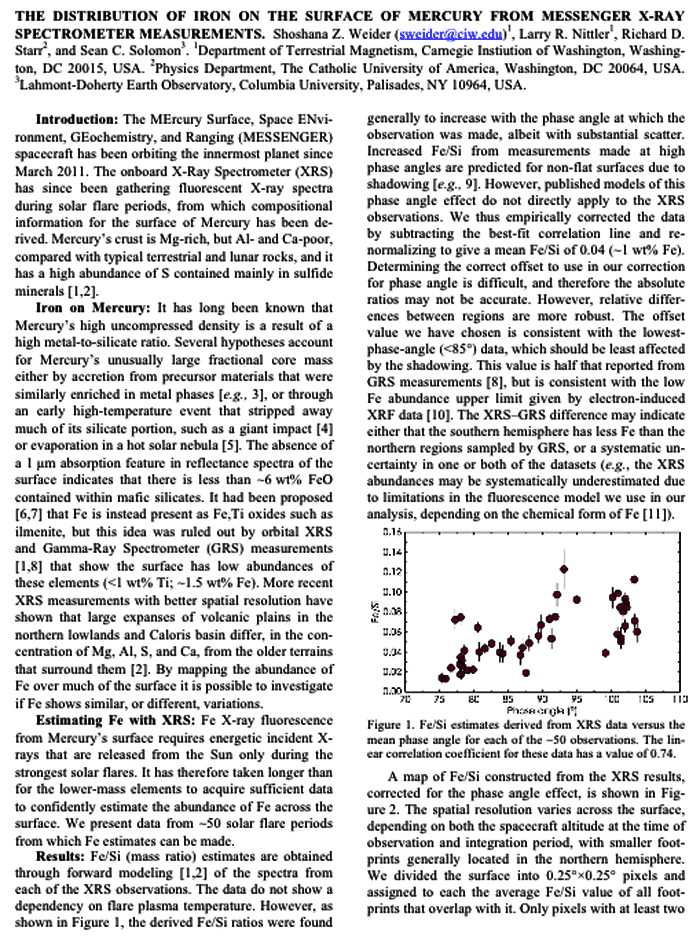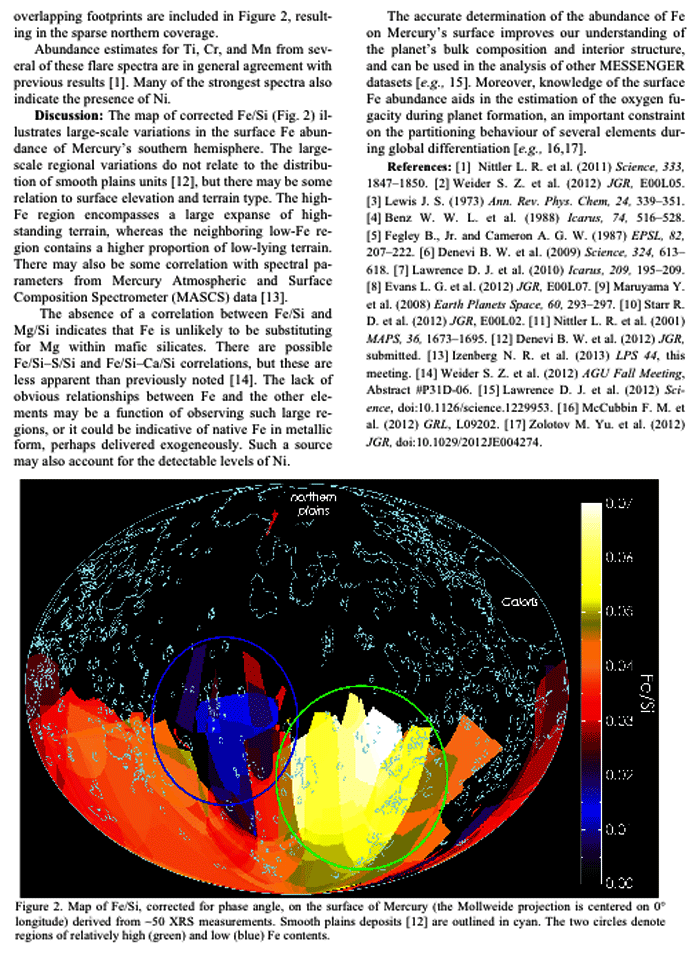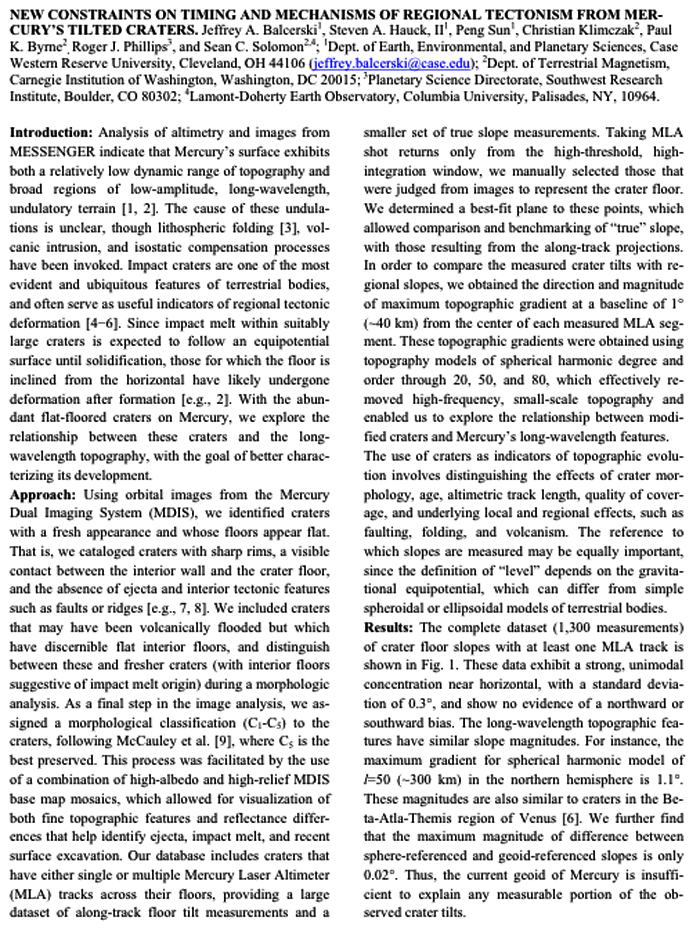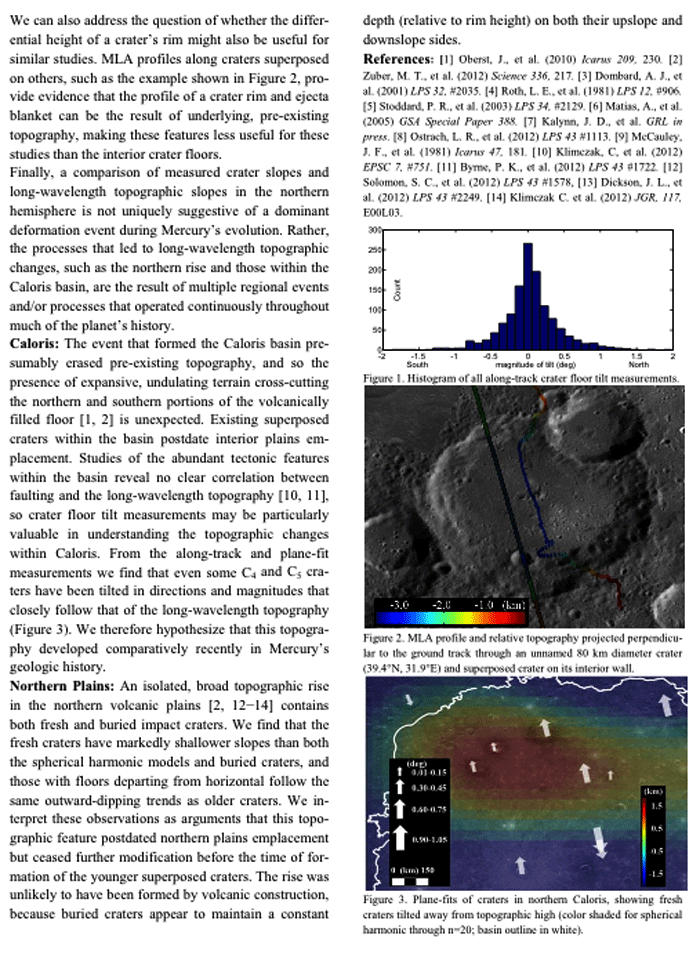.
MESSENGER Completes Its First Extended Mission at Mercury
On March 17, 2013, MESSENGER successfully completed its year-long first extended mission in orbit about Mercury, building on the groundbreaking scientific results from its earlier primary mission. Today the team is poised to embark on a second extended mission that promises to provide new observations of Mercury's surface and interior at unprecedented spatial resolution and of the planet's dynamic magnetosphere and exosphere at high time resolution during the peak and declining phase of the current solar cycle.
"NASA is currently considering a second extension to mission operations and until the formal decision is made has asked that we continue to operate the spacecraft and its scientific instruments," says MESSENGER Project Manager Helene Winters of the Johns Hopkins University Applied Physics Laboratory (APL) in Laurel, Maryland.
During its first extended mission, MESSENGER completed 12 specialized measurement campaigns that led to new discoveries about surface volatiles on Mercury, the duration of volcanism, the evolution of long-wavelength topography, the nature of localized regions of enhanced exospheric density, the effect of the solar cycle on Mercury's exosphere, and Mercury's energetic electrons.
Among the most recent results was confirmation of the long-held theory that the planet harbors abundant water ice and other frozen volatile materials within its permanently shadowed polar craters.
If approved by NASA, a second extended mission would seek answers to still further questions, each stimulated by findings from the primary mission and first extended mission, including:
What active and recent processes have affected Mercury's surface?
How has the state of stress in Mercury's crust evolved over time?
How have compositions of volcanic materials on Mercury varied with time?
What are the characteristics of volatile sequestration in Mercury's north polar region?
What are the consequences of precipitating ions and energetic electrons at Mercury?
How do Mercury's exosphere and magnetosphere respond to extreme solar wind conditions near and following solar maximum?
What novel insights into Mercury's thermal and crustal evolution can be obtained from high-resolution measurements made at low altitudes?
A possible second extended mission is among the topics MESSENGER team members will be discussing on March 20 in a session at the 44th Lunar and Planetary Science Conference in The Woodlands, Texas.
"Mercury has been revealing its many secrets, but each discovery has led to new puzzles," adds MESSENGER Principal Investigator Sean Solomon, of Columbia University's Lamont-Doherty Earth Observatory. "We now have a healthy spacecraft in orbit around a planet that will not be visited by spacecraft again for more than 10 years. Our scientific plans for a second extended mission build on past discoveries, can be accomplished with planned orbital observations, span an unprecedented phase of the solar cycle, and include extraordinarily low-altitude campaigns that will offer spectacular new views of Mercury's surface and near-surface environment. We hope that NASA will support the continued investigation of the most enigmatic of the inner planets."
.

.

.

.
 Quelle: NASA
Quelle: NASA6294 Views
